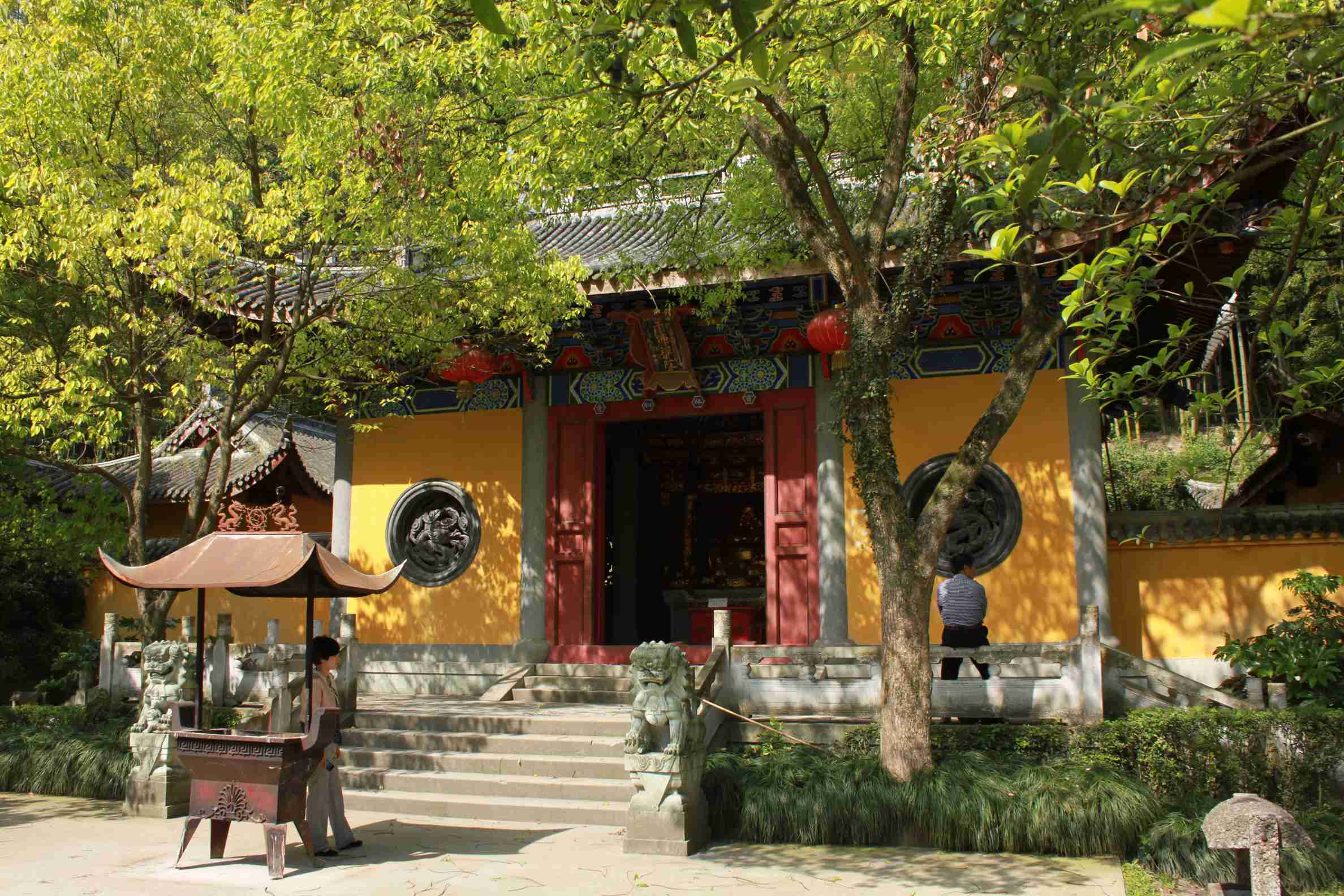
Deutsch-Chinesische Enzyklopädie, 德汉百科
 Zhejiang Sheng-ZJ
Zhejiang Sheng-ZJ


Die Hochschule wurde 1928 von dem renommierten Erzieher Cai Yuanpei gegründet mit dem Ziel, in dem vom Krieg zerrissenen China Religion durch die Schönen Künste zu ersetzen. In diesem Sinne hat die Hochschule zahlreiche bekannte und einflussreiche Künstler gefördert. Xu Jiang hofft, dass die Hochschule im neuen Jahrtausend eine der hervorragendsten Kunstinstitutionen der Welt werden und Künstler anziehen wird, um das reiche Erbe Chinas zu erfahren.
Entsprechend einem Grußwort des Präsidenten Xu Jiang zu ihrem 80-jährigen Bestehen hat die „Chinesische Hochschule der Künste” im Bereich der Schönen Künste das umfassendste Angebot innerhalb Chinas. Theorie und Praxis sollen integriert werden, Schwerpunkt wird gelegt auf menschliche Fürsorge und soziale Bedürfnisse. Als Mittel dienen sowohl moderne technische und kulturelle Strukturen als auch die traditionellen künstlerischen Disziplinen. Dementsprechend werden die Theorie der Schönen Künste, der Architektur, des Filmes und der Neuen Medien erforscht.

 Anhui Sheng-AH
Anhui Sheng-AH
 Chongqing Shi-CQ
Chongqing Shi-CQ

 History
History
 H 1000 - 500 BC
H 1000 - 500 BC

 History
History
 I 500 - 0 BC
I 500 - 0 BC
 Guizhou Sheng-GZ
Guizhou Sheng-GZ
 Henan Sheng-HA
Henan Sheng-HA
 Hubei Sheng-HB
Hubei Sheng-HB
 Hunan Sheng-HN
Hunan Sheng-HN
 Jiangsu Sheng-JS
Jiangsu Sheng-JS
 Jiangxi Sheng-JX
Jiangxi Sheng-JX
 Shandong Sheng-SD
Shandong Sheng-SD
 Shanghai Shi-SH
Shanghai Shi-SH
 Sichuan Sheng-SC
Sichuan Sheng-SC
 Zhejiang Sheng-ZJ
Zhejiang Sheng-ZJ

Chu (chinesisch 楚, Pinyin Chǔ, W.-G. Ch'u) war ein Königreich im Gebiet des heutigen Süd-China während der Westlichen Zhou-Dynastie (1046 bis 771 v. Chr.), der Zeit der Frühlings- und Herbstannalen (722 bis 481 v. Chr.) und der Zeit der Streitenden Reiche (475 bis 221 v. Chr.).
Ursprünglich war das Land als Jing (荆) und nachfolgend als Jingchu (荆楚) bekannt. Die größte Ausdehnung umfasste ein umfangreiches Gebiet, einschließlich das der heutigen Provinzen Hunan, Hubei, Chongqing, Henan, und Teile von Jiangsu. Die Hauptstadt von Chu war Ying.
Chu war zu seiner Zeit einer der mächtigsten Staaten und unterwarf zum Beispiel auch den kleineren Staat Lu im heutigen Shandong.
Größere Bedeutung erlangte Chu erstmals unter der Herrschaft von König Zhuang.
Chu (Chinese: 楚, Old Chinese: *s-r̥aʔ[2]) was a hegemonic, Zhou dynasty era state. From King Wu of Chu in the early 8th century BCE, the rulers of Chu declared themselves kings on an equal footing with the Zhou kings. Though initially inconsequential, removed to the south of the Zhou heartland and practising differing customs, Chu began a series of administrative reforms, becoming a successful expansionist state during the Spring and Autumn period. With its continued expansion Chu became a great Warring States period power, until it was overthrown by the Qin in 223 BCE.
Also known as Jing (荆) and Jingchu (荆楚), Chu included most of the present-day provinces of Hubei and Hunan, along with parts of Chongqing, Guizhou, Henan, Anhui, Jiangxi, Jiangsu, Zhejiang, and Shanghai. For more than 400 years, the Chu capital Danyang was located at the junction of the Dan and Xi Rivers[3][4] near present-day Xichuan County, Henan, but later moved to Ying. The ruling house of Chu originally bore the clan name Nai (嬭) and lineage name Yan (酓), but they are later written as Mi (芈) and Xiong (熊), respectively.[5]
Chu ou l'état de Chu (chinois simplifié : 楚国 ; chinois traditionnel : 楚國 ; pinyin : ; littéralement : « pays Chǔ ») était un État des périodes des Printemps et Automnes et des Royaumes combattants, établi sur le fleuve Yangzi. Chu a été annexé par Qin en 223 av. J.-C. La maison royale de Chu à l'origine portait le nom ancestral Nai (嬭) et le nom de clan Yan (酓) mais ceux-ci sont devenus plus tard Mi (芈) et Xiong (熊)1.
Chǔ (楚) fu un regno situato nell'attuale Cina centro meridionale, durante il Periodo delle primavere e degli autunni, (722-481 a.C. e il Periodo dei regni combattenti (481-221 a.C.). La famiglia dominante possedeva il cognome "mi" (芈), nome del clan "xiong" 熊, e il titolo nobiliare di "zi", corrispondente approssimativamente al nostro visconte.
Il primo nome dello Stato era Jing (荆) e successivamente Jingchu (荆楚). Al massimo della sua espansione il regno di Chu occupava una vasta area di territorio, comprendente le attuali province dello Hunan, Hubei, Chongqing, Henan, Shanghai, e parte dello Jiangsu. La capitale del regno era Ying (郢), localizzata approssimativamente nei pressi dell'attuale Jingzhou, nella provincia dell'Hubei.
Chǔ (楚, Wade-Giles: Ch'u3, pinyin: Chǔ) fue un reino situado en lo que hoy es China central y meridional durante el período de Primaveras y Otoños (722-481 a. C.) y el período de Reinos Combatientes (481-212 a. C.).
Fue originalmente conocido como Jing (荆) y luego como Jingchǔ (荆楚). Con el peso de su poder, el reino Chǔ ocupó vastas tierras, incluyendo las provincias actuales de Hunan, Hubei, Chongqing, Henan, Shanghái, y partes de Jiangsu. La capital de Chu era Ying (郢) y estaba ubicada en lo que hoy es la provincia de Hubei.
Чу (кит. 楚) — царство в южном Китае во время эпохи Чуньцю (722—481 гг. до н. э.) и Чжаньго («Воюющие царства» 481—221 до н. э.).
Первоначально царство было известно под названием Цзин (荆), затем Цзинчу (荆楚). На пике могущества под властью Чу находилась территория современных провинций Хунань, Хубэй, Чжэцзян, частично Цзянсу, Цзянси, Аньхой и Фуцзянь, а также города Шанхай. Ранней столицей Чу был Даньян 丹陽, в правление Сюн Туна (8-7 вв. до н. э.) столица была перенесена в Ин 郢 (совр. Цзинчжоу).


Cixi (慈溪市, Cíxī Shì) ist eine kreisfreie Stadt, die zum Verwaltungsgebiet der bezirksfreien Stadt Ningbo, Provinz Zhejiang, der Volksrepublik China gehört.
慈溪,浙江省辖、宁波市代管县级市,因治南有溪,东汉董黯“母慈子孝”而得名。慈溪地处东海之滨,杭州湾南岸,东离宁波60公里,北距上海148公里,西至杭州138公里,是长三角地区大上海经济圈南翼重要的工商名城,也是国务院批准的沿海经济开放区之一。
慈溪是典型的围垦城市,有“唐涂宋地”之称 ,蕴藏着丰富的海涂资源,是浙江省土地后备资源最富足的地区;属江浙民系;有悠久的青瓷文化,是越窑青瓷的主要发源地之一,“海上陶瓷之路”的重要起点,所产越窑青瓷奠定中国陶瓷“南青北白”的格局 。
慈溪是全国文明城市、国家园林城市、国家卫生城市、中国最具幸福感城市、中国县域经济信息化试点县(市)、国家中小城市综合改革试点地区、浙江高质量发展建设共同富裕示范区试点地区 。全国中小城市综合实力百强县市。







 Energy resource
Energy resource
 Geography
Geography
 Religion
Religion